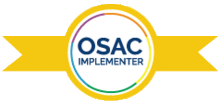January 2020
The Organization of Scientific Area Committees (OSAC) for Forensic Science Standards Bulletin provides an update on forensic science standards that are moving through the Registry Approval Process at OSAC and those moving through the development process at standards developing organizations (SDOs).
In this issue
Bulletin Summary
The OSAC Standards Bulletin is organized to capture the following standard development phases in the OSAC Registry Approval and SDO processes:
- After being published by an SDO, selected standards and guidelines may proceed to the OSAC Registry Approval Process where they are evaluated further for technical merit and impact on the forensic science community.
- In the SDO process, OSAC committees or task groups submit an idea (i.e., work item), a partially drafted document, or a fully drafted document to an SDO for further development, commenting, and publishing.
Number of New Standards Placed on the OSAC Registry: None
Number of OSAC Registry Documents Open for Comment: None
OSAC Registry Updates

The OSAC Registry serves as a trusted repository of high-quality, science-based standards and guidelines for forensic science practice. A document included on the Registry has progressed through the formal SDO process and has been published as a standard. OSAC elevates standards to the OSAC Registry as an endorsement of a document’s high quality and to encourage its adoption by relevant stakeholders in the forensic science community.
Standards Moving through the OSAC Registry Approval Process
The following standards have moved from one step in the OSAC Registry Approval process to another during the last month:
In the Comment Adjudication Phase:
- ANSI/ASB Standard 020, Standard for Validation Studies of DNA Mixtures, and Development and Verification of a Laboratory’s Mixture Interpretation Protocol, First Edition, 2018.
- ANSI/ASB Standard 040, Standard for Forensic DNA Interpretation and Comparison Protocols, First Edition, 2019.
- ANSI/ASB Technical Report 097, Terminology Used for Forensic Footwear and Tire Evidence, First Edition, 2019.
For a list of all standards currently under consideration, please visit the OSAC website.
If your organization is on the "tip of the spear" and has already embraced the OSAC Registry implementation efforts, let us know!
Please email mark.stolorow [at] nist.gov (mark[dot]stolorow[at]nist[dot]gov) to share your experience.
SDO Updates
New or Revised Standards

- On December 16, 2019 the American Academy of Forensic Science Standards Board (ASB) published ANSI/ASB Standard 030, Standard for a Quality Assurance Program in Bloodstain Pattern Analysis, First Edition, 2019. This document, initially developed by OSAC’s Bloodstain Pattern Analysis Subcommittee and finalized by the ASB Bloodstain Pattern Analysis Consensus Body,provides requirements for establishing and maintaining a documented quality assurance program in bloodstain pattern analysis to forensic service providers.
- On December 16, 2019 ASB published ANSI/ASB Standard 044, Standard for the Examination of Documents for Indentations, First Edition, 2019. This document was initially developed by SWGDOC, updated by OSAC’s Forensic Document Examination Subcommittee, and finalized by the ASB Forensic Document Examination Consensus Body. It summarizes commonly accepted techniques, technologies, and procedures used by forensic document examiners for the examination of documents for indentations.
- On December 16, 2019 ASB published ANSI/ASB Standard 090, Standard for Sex Estimation in Forensic Anthropology, First Edition, 2019. This document was initially developed by SWGANTH, updated by OSAC’s Anthropology Subcommittee, and finalized by the ASB Anthropology Consensus Body. It describes methods for estimating sex from adult skeletal elements obtained directly from skeletal remains or radiographic images of skeletal remains. The methods in this standard provide a morphologically-based or mathematically-based scientific manner for estimating sex, and for documenting the sex estimation process. This document does not include sex estimation in skeletal elements from subadults, or through DNA analysis.
Comment Period Open on Draft Documents
Consider sharing your expertise by commenting on the following documents to ensure they are technically sound and aligned with the needs of the forensic science community:
ASB:
- ASB 126, Best Practice Recommendation for Casting of Footwear and Tire Impression Evidence. This new document provides best practice recommendations for casting of footwear and tire impression evidence by appropriate personnel. Following the recommendations described in this document should result in the optimal recovery of impressions. Comment deadline January 13, 2020.
- ASB Technical Report 051, Scope of Work for a Footwear/Tire Examiner. This technical report covers the primary responsibilities, types of examinations, and constituent duties of a footwear/tire examiner for lab management, quality assurance, law enforcement and the judiciary. Comment deadline January 20, 2020.
- ASB 114, Best Practice Recommendation for Validation of Forensic DNA Software. This document assists a laboratory in designing validation studies to evaluate the various software programs used in the forensic DNA laboratory. Specifically, this guidance document applies to, but is not limited to the following: (a) software used as a component, part, or accessory of instrumentation; (b) software that impacts chain of custody documentation; (c) software that impacts the decision process and/or influences conclusions or reporting; and (d) software created by the laboratory to assist with calculations and/or data transfers. This document does not cover probabilistic genotyping. Comment deadline January 27, 2020.
For the ASB documents listed above, download the comment template and return it to asb [at] aafs.org (asb[at]aafs[dot]org) by the comment deadline.
ASTM International:
- Guide for Systematic Approach to the Extraction, Analysis, and Identification of Ignitable Liquids in Fire Debris Samples (WK64631). This guide describes a systematic approach to the extraction, analysis, and identification of ignitable liquids and their residues in solid and liquid samples. This guide also addresses evidence handling, extraction methodologies, instrumental analysis techniques, and analytical data interpretation. Comment deadline January 20, 2020.
- Practice for Forensic Paint Analysis Training Program (WK64632). This document is intended as a practice for use by laboratory personnel responsible for training examiners to perform forensic examinations and comparisons of paint. It contains a list of training objectives with recommended methods of instruction, reading assignments and structured exercises to provide practical experience for the trainee. Comment deadline January 20, 2020.
- Practice for Forensic Tape Analysis Training Program (WK64633). This document is intended as a practice for use by laboratory personnel responsible for training examiners to perform forensic examinations and comparisons on pressure sensitive tapes and adhesives. It contains a list of training objectives with recommended methods of instruction, reading assignments and structured exercises to provide practical experience for the trainee. Comment deadline January 20, 2020.
To access the ASTM documents listed above, contact Brian Milewski (bmilewski [at] astm.org (bmilewski[at]astm[dot]org)) to become a member of Committee E30 on Forensic Science.
New Work Proposals for New or Revised Standards
The following documents are being initiated and are expected to result in a new or revised standard:
ASB:
- On December 6, 2019 a Project Initiation Notification System (PINS) was published on page 20 in the ANSI Standards Action. This will begin a 30-day period for public comment on the initiation of ASB’s work on the following document:
- BSR/ASB Std 139-202x, Reporting DNA Conclusions. This new document will provide the reporting requirements for autosomal STR and haplotype DNA conclusions for results obtained from evidentiary samples in forensic casework and does not apply to paternity or any other biological relatedness conclusions.
- On December 20, 2019 a PINS was published on page 20 in the ANSI Standards Action. This will begin a 30-day period for public comment on the initiation of ASB’s work on the following document:
- BSR/ASB Std 096-202x, Standard Method for the Examination and Documentation of Ammunition and Ammunition Components. This new document will establish a standard for firearm and toolmark examiners and technicians to examine and document ammunition and/or ammunition components.
Contact Teresa Ambrosius (tambrosius [at] aafs.org (tambrosius[at]aafs[dot]org)) for more information on the proposed ASB documents or to submit your comments.
Other News

Attending the 2020 AAFS Annual Scientific Meeting in Anaheim, California?
If so, be sure to attend Workshop 14 - Mass Disasters and Disaster Victim Identification (DVI) on Monday, February 17, 2020 from 8:30 a.m. to 5:30 p.m. to learn more about the OSAC Registry Approved Standard ANSI/ASB Best Practice Recommendation 010, Forensic Anthropology in Disaster Victim Identification, Best Practice Recommendations for the Medicolegal Authority, First Edition, 2018 and its impact on the forensic science community.
Visit the AAFS Annual Scientific Meeting website for more information and to register!

Check out this article by the Georgia Bureau of Investigation-Division of Forensic Sciences (GBI-DOFS) about its journey and support for implementing the standards on the OSAC Registry. This article is also available in the latest ASCLD Crime Lab Minute.

